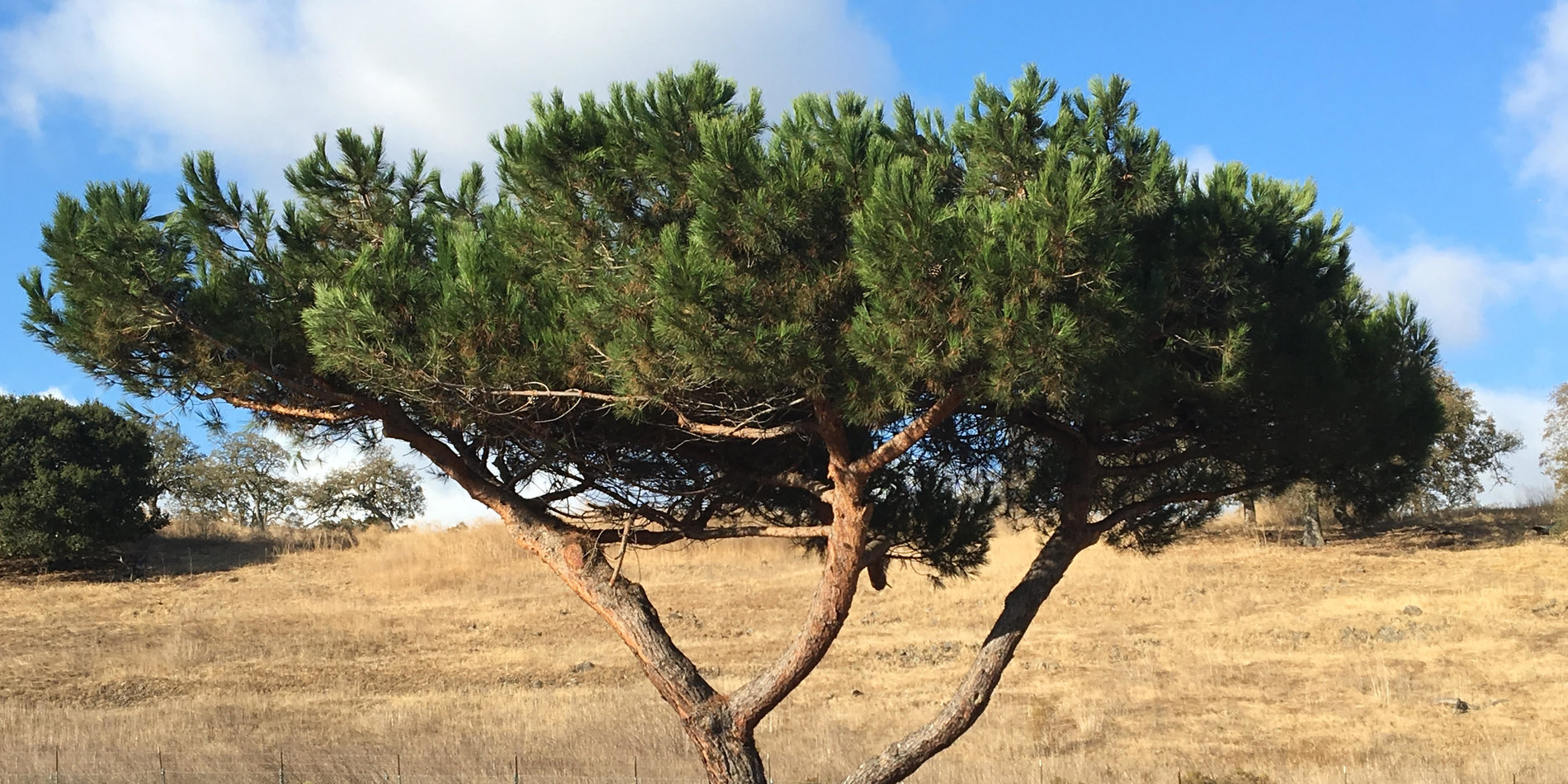TREES AT STANFORD
Trees have been an important part of Stanford since the very beginning. The university has a tree for its mascot, its logo features a tree, it adjoins a city named for a tree. The palm-lined main entrance to the university traverses a eucalyptus arboretum, with a hilltop oak vista in the distance. The university’s arboricultural heritage has given rise to a campus adorned with a remarkable diversity of trees.
“…it is desired that there shall be exhibited to advantage all the trees and wood plants of the world that may be expected to grow to mature natural forms under the climatic and other conditions of the locality”
– Memorandum written by Frederick Law Olmsted and signed by Leland Stanford (1888), quoted by Price (2001)

Evolutionary Trees
The Origin of Species famously contained only a single figure, an evolutionary tree depicting relationships among organisms. The study of evolutionary trees has since become central to modern biology, drawing on mathematical areas of combinatorics, probability, and statistics for its ideas and algorithms. THE STANFORD X-TREE PROJECT takes its inspiration from Stanford’s trees—the real ones, which grow from the ground—to illustrate concepts from mathematical phylogenetics, the study of evolutionary trees.
“Senator Stanford started an Arboretum at the entrance to the University in which he intended there should ultimately be a collection of trees and shrubs that would serve… to instruct the students of the University”
– Stanford trustee Timothy Hopkins (1910), quoted by Price (2001)
WHY X-TREES?
An X-tree is a mathematical tree structure whose leaves are assigned labels from a set X. X-trees can be viewed as one of the foundational concepts of mathematical phylogenetics, as evolutionary trees of organisms consider the relationships among taxonomic groups whose names correspond to the labels in set X.
